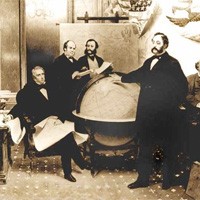The purchase of Alaska by the United States in 1867 remains a fascinating historical event. Often dubbed “Seward’s Folly” or “Seward’s Icebox” at the time, this acquisition was far from foolish. It marked a pivotal moment, signifying the end of Russia’s colonial ambitions in North America and simultaneously propelling the United States onto the global stage as a major power in the Asia-Pacific region. But why did the US buy Alaska from Russia?
Russia’s interest in Alaska began in the early 18th century, driven by Czar Peter the Great’s ambition to explore and expand Russian territories. Vitus Bering’s expeditions starting in 1725 charted the Alaskan coast, revealing a land rich in resources. However, by the mid-19th century, Russia’s enthusiasm for its North American colony had waned. St. Petersburg struggled to finance and defend such a distant territory. The sparse Russian settlements in Alaska, never exceeding four hundred permanent residents, highlighted the logistical and economic challenges. Furthermore, Russia’s defeat in the Crimean War underscored its financial vulnerabilities and further diminished its appetite for maintaining far-flung colonies.
 Signing of the Alaska Treaty, 1867: A historical depiction of the treaty signing ceremony for the Alaska Purchase, illustrating the transfer of Alaska from Russia to the United States.
Signing of the Alaska Treaty, 1867: A historical depiction of the treaty signing ceremony for the Alaska Purchase, illustrating the transfer of Alaska from Russia to the United States.
Facing these challenges, Russia saw an opportunity to divest itself of Alaska while simultaneously achieving a strategic objective. They feared Great Britain, their primary rival in the Pacific, might seize Alaska. Selling to the United States was seen as a shrewd move to counter British influence in the region. Russia first proposed the sale in 1859, viewing the burgeoning United States as a preferable neighbor to their powerful British rivals.
Although the onset of the American Civil War initially delayed negotiations, Secretary of State William Seward recognized the immense potential value of Alaska. After the war, Seward eagerly pursued the renewed Russian offer. In a deal brokered with Russian Minister Edouard de Stoeckl, the Alaska Treaty was agreed upon on March 30, 1867, with the United States purchasing Alaska for $7.2 million. The Senate swiftly ratified the treaty on April 9, President Johnson signed it on May 28, and the formal transfer occurred on October 18, 1867.
For many years following the purchase, Alaska remained largely neglected by the United States, governed loosely under military, naval, or Treasury authority. Public skepticism was rife, with critics deriding the acquisition as “Seward’s Folly.” However, the discovery of a major gold deposit in the Yukon in 1896 dramatically changed perceptions. Alaska became the gateway to the Klondike gold rush, validating Seward’s vision and highlighting the territory’s economic potential. Later, in World War II, Alaska’s strategic location proved critical, solidifying its importance. Alaska finally achieved statehood on January 3, 1959, fully vindicating the wisdom of its purchase. The answer to why did the US buy Alaska lies in a combination of Russian strategic calculation and American foresight, ultimately shaping the geopolitical landscape of the 20th and 21st centuries.